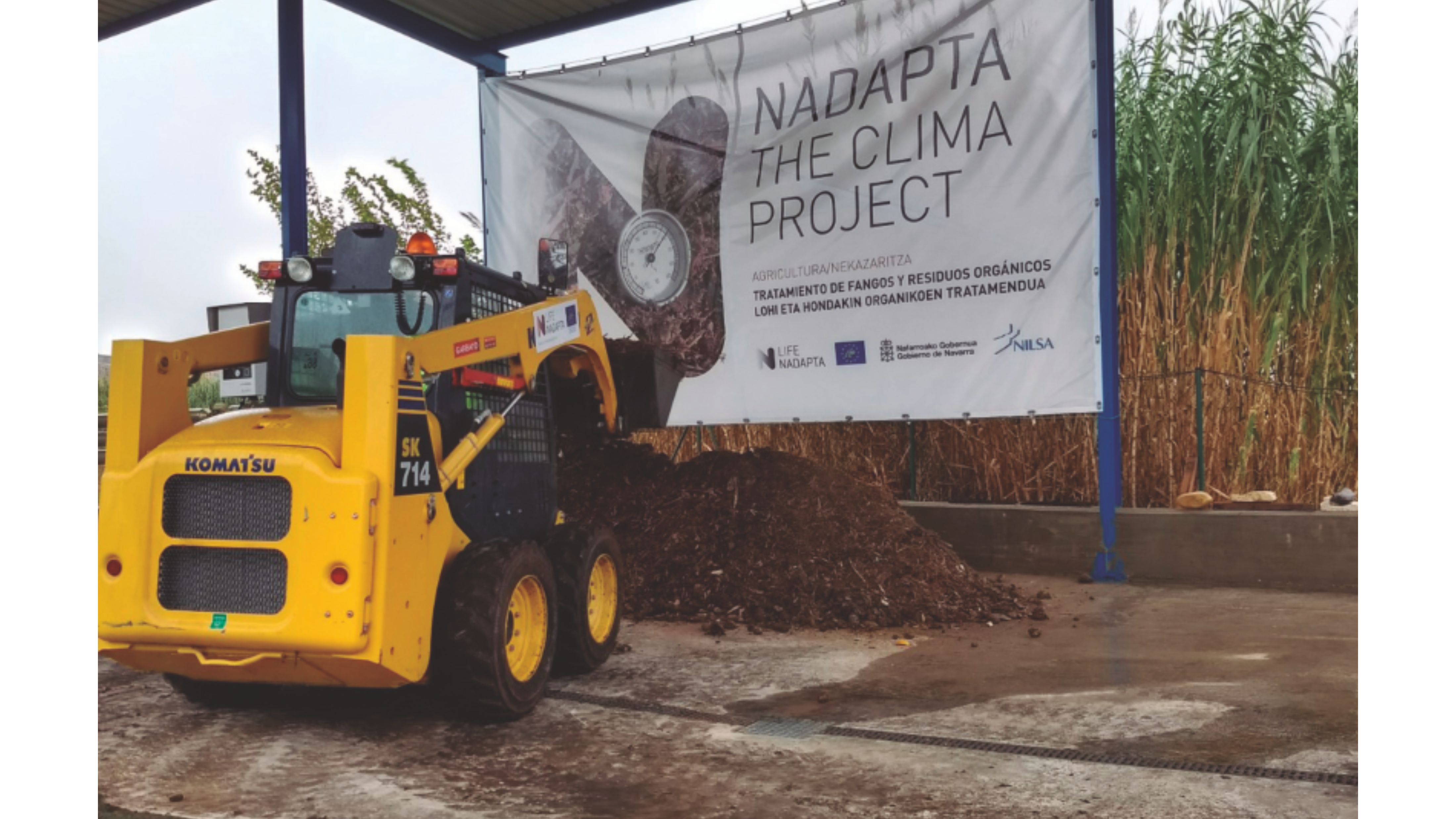
NILSA publishes a scientific article entitled 'Physico-Chemical and Microbiological Control of the Composting Process of the Organic Fraction of Municipal Solid Waste: A Pilot-Scale Experience'
It is an Open Access publication whose content has been developed and funded by LIFE-IP NAdapta-CC in the framework of Action C4.1.
14-12-2022
The scientific journal 'International Journal of Environmental Research and Public Health' has recently published the article 'Physico-Chemical and Microbiological Control of the Composting Process of the Organic Fraction of Municipal Solid Waste: A Pilot-Scale Experience'. It is an Open Access publication.
This study is part of the LIFE-IP NAdapta-CC project (LIFE16 IPC/ES/000001), an integrated strategy for adaptation to Climate Change in Navarra and, in particular, in action C4.1. NILSA participates in water action and collaborates in agricultural action, which includes among its objectives the development of new soil amendments from different organic waste.
The aim of this work was to carry out a pilot experiment to monitor OFMSW (organic fraction of municipal solid waste) composting processes using different types of installations (automatic reactor, aerated static pile and turned pile).
To carry out the process, pruning waste was used as structuring material (SM), in a 1:1 and 1:2, v:v. Monitoring was carried out through the control of physico-chemical and microbiological parameters, such as temperature, pH, humidity, Rottegrade, Solvita tests, the presence of Salmonella sp. and Escherichia coli, total coliform, and Enterococcus sp. concentrations.
After carrying out the tests, it can be affirmed that the three types of installations used worked correctly in terms of the monitoring of physico-chemical parameters, giving rise to a compost of sufficient stability and maturity to be applied on agricultural soil.
In all cases the bacterial concentrations in the final compost were lower than those detected in the mixture of initial components for its preparation, thus complying with the requirements established in RD 506/2013 and RD 999/2017RD on fertilizer products.
However, it cannot be affirmed that one of the three types of installation used produces a greater bacterial inactivation than the others. When composting with different types of facilities, it is of interest to optimize the irrigation and aeration system in order to have a better control of the process and to study the possible temperature gradients in the piles to ensure good sanitization without the risk of bacterial proliferation a posteriori.
Finally, the different initial mixtures of OFMSW and SM used in this study did not have a significant influence on the functioning of the composting process or on the microbiological quality during the process. The irrigation water can provide a bacterial contribution that can lead to increases in concentration during the composting process.


